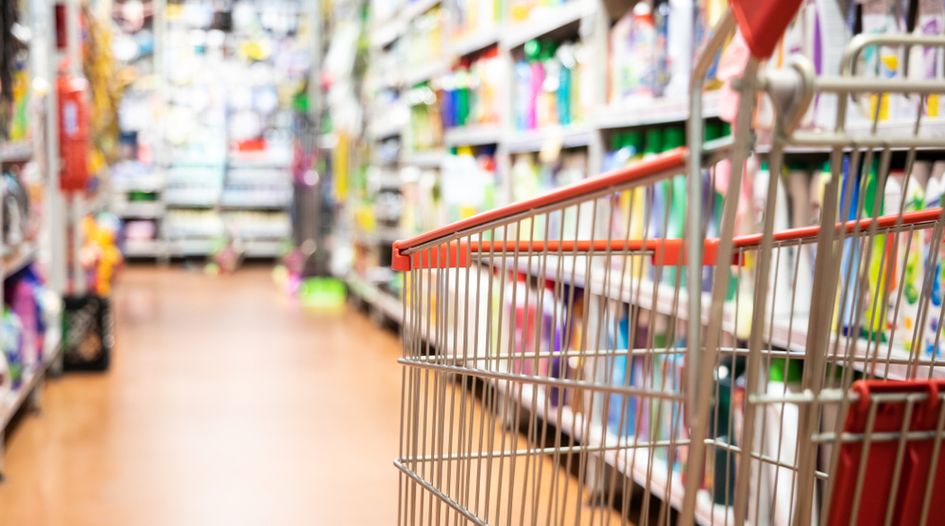Four online shopping trends every CPG brand should know in 2021

Drawing on the results of a survey of 2,000 consumers, in this co-published piece, Red Points’ Daniel Shapiro identifies how and why shoppers purchase fake goods, revealing the practical actions that brand owners can take to fight back.
The e-commerce industry is huge and while people buy all kinds of products online, the demand for consumer packaged goods (CPG) in particular is rising. The problem, however, is that competition in this field from both legitimate and illegitimate sellers is tough. Due to the large numbers of sellers, you have to be at your best in order to make a dent.
Red Points asked 2,000 online consumers about their shopping experiences and sentiment towards CPG brands to understand the growing demand in the industry. Worryingly, the study found that over 50% of consumers have bought fake goods online in 2021.
A closer look at four online shopping trends may help CPG brands to fight the rising online counterfeiting problem and provide tips on how to address the challenges that these trends create.
Trend one: consumers buy fakes because they are cheaper
There are many reasons why users turn to fake goods, including a low price tag. According to the Red Points study, about 21% of buyers consider price when buying CPG. Surprisingly, a similar number of people consider reviews when making a buying decision related to CPG.
Since CPG are used regularly, consumers do not always spend time researching a product or its quality. Instead, they end up ‘snap shopping’ to save time. This has inevitably led to consumers buying fake goods. Consumers often use the ‘lowest price first’ feature when searching for products online and may choose the cheapest goods, especially if they are generic items.
Action: protect consumers by educating them
As a brand, it is your responsibility to protect your goods and your buyers. This can be done by educating users about the dangers of buying counterfeit CPG while highlighting the advantages of buying legitimate items and the downsides of buying counterfeits in general. For instance, brand owners can publish online reviews and guides on how to identify fake goods and why to stay away from them.
Trend two: people find most fakes on marketplaces and social media sites
Fake products are available everywhere, including marketplaces and social media platforms. According to Red Points’ data, 19% of presumed fake products were purchased on online marketplaces and 17% were sold on social media.
The challenge for brands is that there are hundreds of global marketplaces and tens of thousands of sellers. Therefore, distinguishing a vast network of authorised sellers and keeping track of who is offering legitimate products and who is offering counterfeit products is extremely difficult without the right technology.
Action: report fakes to marketplaces and social media sites
The top e-commerce platforms have been improving their efforts to protect intellectual property and brands. Amazon hit the headlines in May for spending $700 million on fighting fakes and blocking more than 10 billion replica listings last year. Smaller stores are also taking action to prevent fraud. Almost all pages give sellers and users the option to report fakes. They take such reports seriously and perform detailed investigations to decide how to deal with counterfeit products and the people selling them. A best practice as a brand owner is to use technology to identify fake goods and report them to the relevant authorities.
Trend three: most consumers are satisfied with the quality of counterfeit products
About 84% of consumers said that fake products have met or exceeded their expectations. This should come as a warning sign for CPG brands as in some cases, despite their low quality, counterfeiters are getting so good at mimicking real products that they start eating into brands’ client base and revenue.
Action: take care of your market presence
As brands develop their omnichannel, so do counterfeiters. Brand owners should keep an eye on all channels through which their products are being sold. Ensuring your legitimate products always appear on the first pages of search engine results when people are undertaking their online shopping will go a long way. Again, online tools can help to get the job done, as it is nearly impossible to scan every page manually.
Trend four: people think less of a brand if they find a fake version
Purchasing a counterfeit product will affect consumer perception of the brand. For example:
- 58% of consumers think that it is the brand’s responsibility to take care of counterfeit listings;
- 39% of users will no longer trust a brand if they purchase a counterfeit version; and
- 39% of consumers will not buy that brand again.
It is safe to say that having counterfeits on the market harms brand reputation. Not only do you lose potential buyers, but your image suffers as well.
Action: detect and enforce counterfeits and unauthorised sellers
The best way to control the situation is either to stop counterfeit goods from being sold or to prevent fake products from being seen by consumers. Once again, this can be done by finding the platforms on which fake goods are sold.